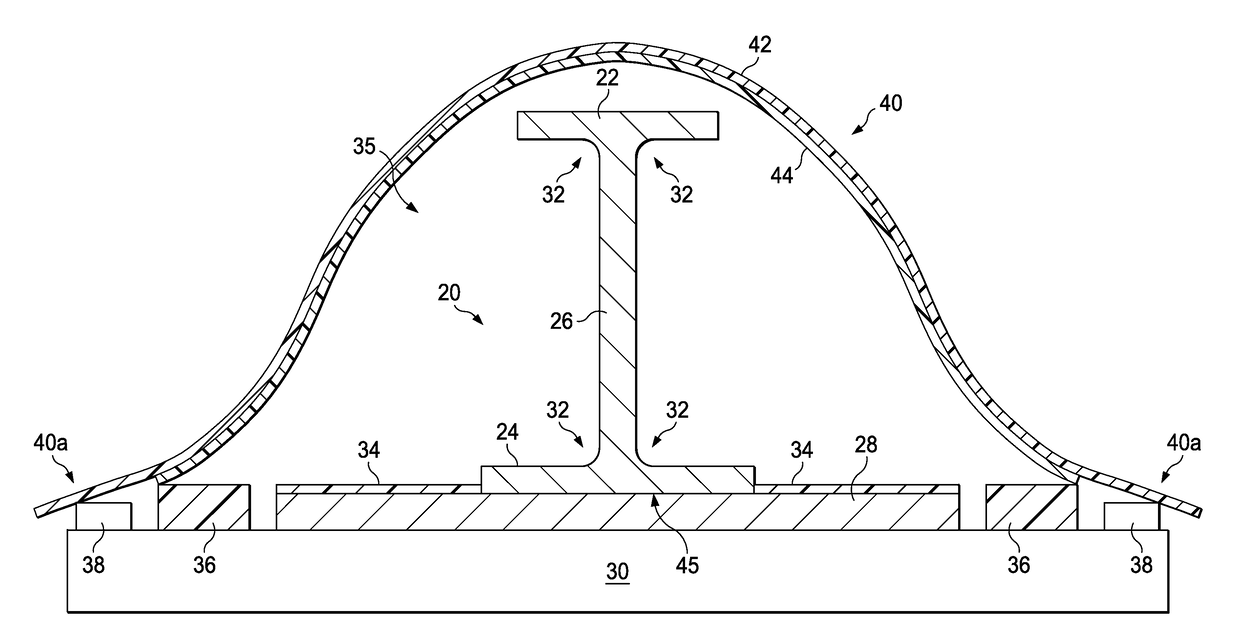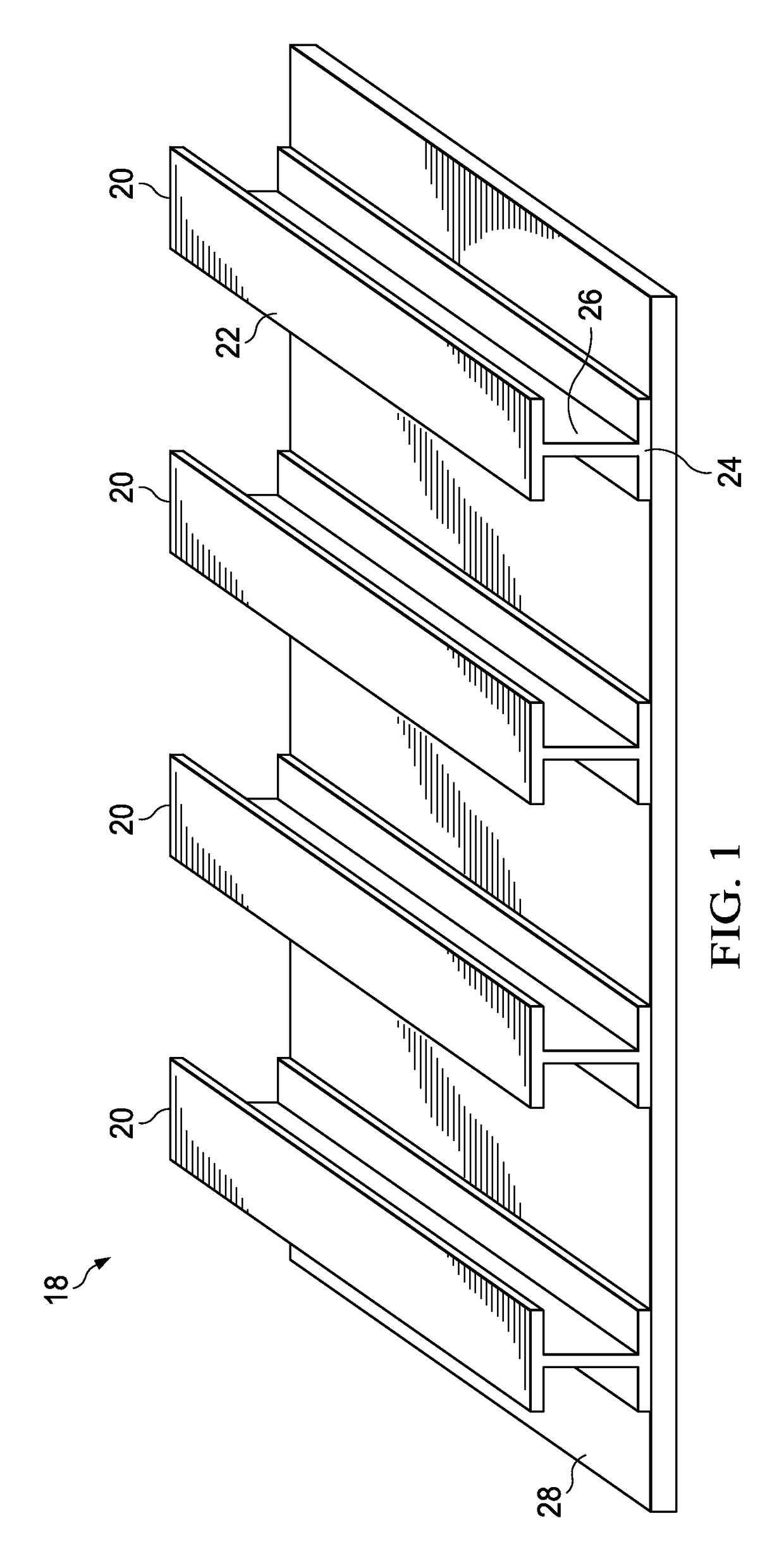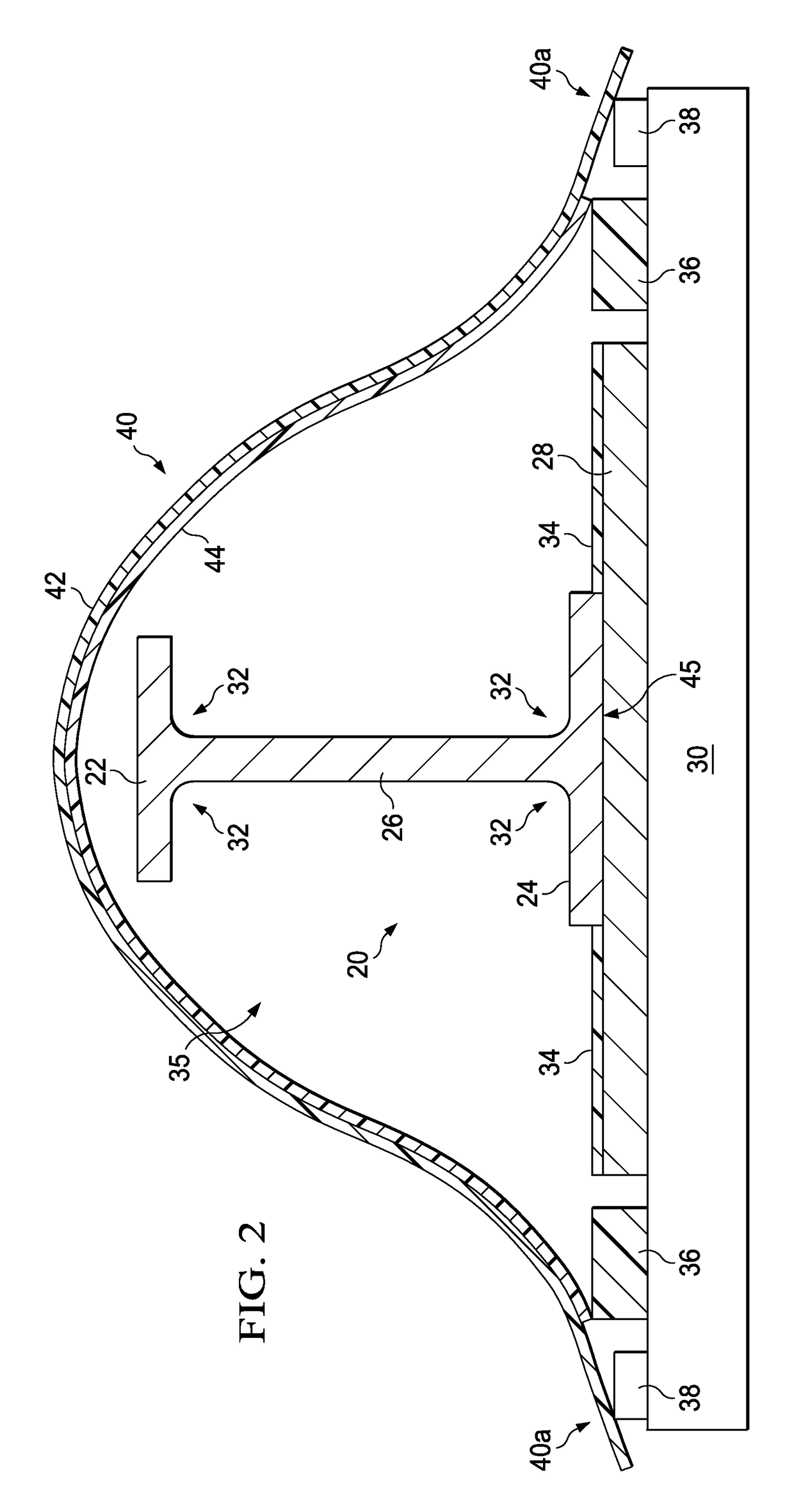Vacuum bag processing of composite parts using a conformable vacuum bag assembly
a vacuum bag and composite part technology, applied in the direction of coatings, etc., can solve the problems of reducing local, limiting the ability of air and volatiles to escape from the laminate, and material scrap, so as to reduce bagging time, labor costs and material scrap, and reduce bagging time. , the effect of loose fitting over the par
- Summary
- Abstract
- Description
- Claims
- Application Information
AI Technical Summary
Benefits of technology
Problems solved by technology
Method used
Image
Examples
Embodiment Construction
[0029]Referring to FIG. 1, the disclosed embodiments relate to vacuum bag processing of composite laminate parts, such as a composite skin 28 stiffened by composite stringers 20. The stringers 20 and the skin 28 are co-bonded using a bonding adhesive (not shown), however other joining techniques requiring vacuum bagging are possible, including those using autoclave or out-of-autoclave processes. In the illustrated embodiment, each of the stringers 20 has an “I” shaped cross-section, comprising upper and lower caps 22, 24 respectively, connected by a web 26. Other cross sectional stringer shapes are possible, including but not limited to “C”, “Z”, “L”, “J” and “hat” shapes. The stringers 20 and composite skin 28 are merely illustrative of a wide range of composite parts having one or more contours that may be processed using a vacuum bag assembly according to the embodiments described below.
[0030]Attention is now directed to FIG. 2 which illustrates a part assembly 35 placed on a too...
PUM
| Property | Measurement | Unit |
|---|---|---|
| elongation | aaaaa | aaaaa |
| thickness | aaaaa | aaaaa |
| stretchable | aaaaa | aaaaa |
Abstract
Description
Claims
Application Information
 Login to View More
Login to View More - R&D
- Intellectual Property
- Life Sciences
- Materials
- Tech Scout
- Unparalleled Data Quality
- Higher Quality Content
- 60% Fewer Hallucinations
Browse by: Latest US Patents, China's latest patents, Technical Efficacy Thesaurus, Application Domain, Technology Topic, Popular Technical Reports.
© 2025 PatSnap. All rights reserved.Legal|Privacy policy|Modern Slavery Act Transparency Statement|Sitemap|About US| Contact US: help@patsnap.com



